From here in Ephesus, a city blessed by the presence of Mary Most Holy who we know is loved and venerated also by Muslims let us lift upto the Lord a special prayer for peace between peoples. Pope Benedict XVI
In1961 Pope John XXIII made known that ceremonies could be performed in the House of the Virgin Mary discussions about the place were subdued and the number of visitors gradually increased. The house was declared a place of pilgrimage. In 1967 Pope Paul VI and in 1979 Pope John Paul II visited. Nov. 29, 2006 Pope Benedict XVI celebrated Mass at the House of the Virgin Mary in Ephesus.
PREFACE
Panaghia Capouli – Panaya Kapulu- Meryem Ana Evi; these are the names residents at the bottom of Nightingale Mountain applied to a sacred spot where, they believed, the Virgin Mary had her last dwelling place on earth. The title attested to the fact that Mary was being honored by a mixture of Greeks, Turks, and Armenians. They came annually over the centuries to pay tribute to her who, at the Council of Ephesus in the year 431 A.D., was honored with the title of Mother of God. Lorraine Fusaro gives a clear, glowing account of Mary’s House, now one of the popular Marian shrines in the world.
In Mary’s House and Sister Marie, Lorraine Fusaro gives an accurate and compelling account of those who were responsible for uncovering this Christian treasure after centuries of being hidden, almost buried. The joy she felt In learning of this treasure is evidenced in her narration. She lines up one after another from a number of people who were determined to prove that the religious practices of these local inhabitants honoring Mary’s Dormltion and Assumption in Ephesus were based on folklore; that the revelations of mystics were imaginative inventions. The very acts forged by these opponents for the destruction of these “nonsensical” beliefs and practices became the building blocks of declaring the claims as factual. The joy expressed In their discovery of the remnants of Mary’s House gave a clarion call to people of every walk of life and every nation to believe with them This Is Mary’s House.”
Mary’s life on earth was quite hidden except at the time of the passion and death of her Son. But the Church believed In her motherhood and believed In her place In the lives of each member of the Church. The woman responsible for the uncovering of Mary’s House is Sister Marie de Mandat-Grancey. Her life, early on as a royal maiden in France, and later as a Daughter of Charity in the Church, aligns itself with the privacy manifested in Mary’s life.
Slowly the work and fame of Sister Marie is being recognized and told by people like Lorraine Fusaro in this booklet. It is a wonderful introduction to A Guiding Star which, with God’s grace, will soon be published.
Each year on August 15th, the Feast of the Assumption of Our Lady into Heaven, we celebrate the mystery of God’s perfect love for Mary, Mother of Jesus. We honor and meditate on God’s perfect and adorable will that Holy Mary, Mother of God, after completing the course of her earthly life was assumed by God, body and soul, into heaven.
- Have you ever pondered the scene of the Assumption?
- Did you know that Christianity is not the only faith to honor Mary’s Assumption…or Her Immaculate Conception?
- Will help you to understand more about the precious and holy ground where Our Dearest Mother lived out the remainder of her later years in the care of St. John the Evangelist and eventually from where she entered into the glories of heaven with her Divine Son, Our Lord Jesus Christ. It’s about a little house, Mary’s House in Ephesus, Turkey and its surrounding area, Panaghia Capouli.
- It will help you see how the Blessed Mother brings her children of the Christian faith and her children of other faiths together to pray side by side in peace in her honor in this sacred little haven of hope and peace. And it’s also about the extraordinary Daughter of Charity that the Church recognizes as Foundress of Mary’s House, Sister Marie de Mandat-Grancey.
Mary in Ephesus
The story of House of Virgin Mary, Ephesus begins just after the death, Resurrection, and Ascension of the Virgin Mary’s son, Our Lord Jesus Christ.
Standing by the cross of Jesus were his mother and his mother’s sister, Mary the wife of Clopas, and Mary of Magdala. When Jesus saw his mother and the disciple there whom he loved, he said, ‘Woman, behold your son.’ Then he said to the disciple, ‘Behold your mother.’ And from that hour the disciple took her into his home.” John: 19, 25-27
Historians agree that John went to Ephesus after the Ascension of Jesus. During the three years just after the Descent of the Holy Spirit in the Upper Room in Jerusalem, John was part of the new Christian community there which was growing in numbers. He was teaching about Jesus and inspiring conversions. This irritated the Jewish authorities and so the persecution of Christians began. The deacon Stephen, the first martyr for Christ, was stoned to death in the year 37. Christians dispersed to Judea and Samaria in fear of the increasing religious persecution. From the Gospel we know that John left that area as well. Entrusted one to the other by Jesus himself, John and Mary would certainly respect the last wishes of their beloved Jesus Christ. Therefore, it is entirely plausible to believe that since Mary’s safety would be of paramount importance to John, he took Mary with him to the safety of Ephesus.
In 431 AD, the Third Ecumenical Council took place in Ephesus. The council met in the 2nd century building called by the same name today, The Church of the Virgin Mary. Since the Council it is also referred to as the Council Church. The aim of the Council was to solemnly pronounce Mary’s divine motherhood. Two hundred religious authorities held discussions for nearly three months. In the end it was pronounced as doctrine that the Virgin Mary had given birth to Christ, son of God, and Mary’s title of “Mother of God” was proclaimed in grandeur. Also, “It was recorded in the proceedings of the meeting that the Virgin Mary, on her arrival at Ephesus, has stayed for sometime in a house which had stood at the site of this Church and that she had died in Ephesus.“ (Virgin Mary, n.d., p.24) In the early days of Christianity a church was only dedicated to a person if he or she had died in that place. At the time of the Council, the existence of a church dedicated to Mary in Ephesus, and only in Ephesus, is proof that Mary was thought to have died there. The Basilica of St. John is found in Ephesus for the same reason.
What the Saints Say… or do not say!
It is interesting to note when certain saints and historians of the early centuries make mention of Mary, St. John, and Ephesus. Father Bernard Deutsch has done an exhaustive study of the contributions of the saints and historians on this topic in his book Our Lady of Ephesus. He references Tertullian (ca.150-230), Hippolytus Portuensis (ca. 160-235), a letter of Polycrates, bishop of Ephesus to Pope St. Victor (189-199), St. Irenaeus (b.ca.150), Clement of Alexandria (d.ca.215), Origen (ca. 185-253), and Eusebius (ca. 265-339) all as maintaining in one way or another that John went to Ephesus, worked there and eventually died there.
St. Epiphanius (310-403AD), in his work “Panarium,” mentions the Virgin Mary and St. John living in Ephesus as he corrects certain practices of some hermits of his time.
It is telling to know that St. Jerome (347-419), who had written in detail about the geography of 4th century Jerusalem, makes no mention at all of any grave belonging to the Virgin Mary or of any monument built on her grave in Jerusalem or in the vicinity. It seems certain that if there had existed such a tomb, he would have not only mentioned it, but given it great attention in his writings. Remember, in those early days that Churches were dedicated to people when they had died in a place. More about Jerusalem later.

Sr. Marie in front of Mary’s House & Sr. Marie and the sisters travelling to Mary’s House by donkey.
Meryam Ana Evi
Long before Mary’s House was discovered by those searching on expeditions from far away countries in the late 1800’s, the people of “Kirkince” (now Sirince), a village about 17 km from Meryem Ana Evi, traditionally believed that there had been a house on Bulbul Dagi (Nightingale Hill) where Mary had lived. Every year on August 15, the Feast of the Assumption, they made a pilgrimage to Panaya Kapula (Doorway to the Virgin) now Meryem Ana Evi. They believed that Mary was Assumed into heaven from this place. This may seem odd that Orthodox villagers would believe this and make this pilgrimage when for ages the rest of their church had believed that Mary lived out the last years of her life in Jerusalem and from there was Assumed into heaven.
But consider this; these pilgrims formed the last group of known lineal descendents of the Ephesian Christians who like Mary and John, had taken refuge in the mountains of Ephesus during the persecutions. Although they had adopted the Turkish language and some of the customs, they had kept their ancient religious traditions…and so they travelled to Mary’s House every year on the Feast of the Assumption. They must have taken this religious ritual very seriously, too, because they had to walk for five hours over mountain paths to reach Meryem Ana Evi. “Those Christian peasants, all Greek schismatics, held to the local traditions of their forefathers despite the contrary doctrine of the whole orthodox Church, which favored the Jerusalem tradition. They celebrated the Holy Sacrifice and commemorated Mary’s Dormition at Panaya contrary to their own liturgical books.”( Deutsch, 1965, p.43)
Mary’s House Discovered
In 1880 a book was published that captured the hearts and imaginations of many devotees of Mary, Mother of God. A German seer by the name of Anne Catherine Emmerich (1771-1824) shared with the world her private revelations in a book entitled The Life of the Blessed Virgin recorded by Clemens von Brentano. In this intriguing book Mary’s House is described in great detail including its exact whereabouts with descriptions of various landmarks in the surrounding location. The House of the Virgin is first discovered in 1881 by Father Julien Gouyet, of Paris, through the diligent use of this book. Archbishop Timoni of Izmir (then Smyrne) did support Gouyet’s work and sent him a helper. The report made to Rome and Paris by Father Gouyet proved unpopular, however, and was disregarded.
Sister Marie de Mandat-Grancey, Daughter of Charity (1837-1915), also reads Anne Catherine Emmerich’s accounts of the Virgin Mary’s House while she is Superior at an orphanage in Pecq, France. Being very devoted to the Blessed Mother, her soul is captured with the hope of finding Mary’s House. Providentially, in 1886, Sister Marie is stationed at the French Naval Hospital at Smyrna (Izmir), Turkey. She finds herself only 75 km away from this very precious treasure about which she is reading. Her yearning to find Mary’s House intensifies.
Sister Marie sets about encouraging a local priest to read Emmerich’s book. This French priest teaches at the local Catholic Sacred Heart College in Izmir and offers Holy Mass at the French hospital where she is stationed. His name is Father Jung of the Order of Lazarists (Vincentian). Another priest from France, Father Eugene Poulin, also a Lazarist and superior of the same college and a colleague and friend of Father Jung, has already read The Life of the Blessed Virgin by Emmerich in “December of 1890 or January of 1891.” (Poulin, 1999, p.15) He has become curious of Emmerich’s accounts of Mary’s House at Ephesus. By an unusual sequence of events detailed in Father Poulin’s diary, Father Jung is finally won over by Sister Marie de Mandat-Grancey’s heartfelt entreaties and he finds himself not only reading, but discussing these books in detail with his peers at the college. (Poulin, 1999, p.17)
It seemed that Sister Grancey had been a passionate adherent of C. Emmerich for a long time. Thus, as she had often said, she had been looking for someone who would excavate the vicinities around Efesus, and try to find the House as well as the grave mentioned by C. Emmerich.
In those days M. Jung was in charge of celebrating the Mass at the French Hospital (Hopital Francais) every day in the morning.
He had the opportunity to speak to Sister Grancey about our discussions and soon she thought to herself: ‘I have found the right man!…’”
They [Father Jung and Sister Marie] discussed the matter….In the morning during breakfast M. Jung rejected everything as an unrelenting skeptic, and the Sister contested his opinion with all her heart; C. Emmerich’s visions weren’t nonsense, nor so ridiculous as he like to believe [Sister pleaded]….Finally, [Sister continued] he was wrong to reject her ideas without knowing what they were! “I’ll send you the book” she said one day in conclusion: “Do promise me you’ll read it.”
These are very practical men of God, particularly Father Jung who is more than skeptical of “Girl’s dreams” as he referred to Emmerich’s recorded private revelations. (Poulin, 1999, p.17) In order to prove or disprove the accounts of Emmerich once and for all, Father Poulin decides to send an expedition to Ephesus the following summer of 1891.
A small group of explorers under the leadership of Father Jung followed Emmerich’s descriptions to locate the Virgin Mary’s House. Emmerich’s descriptions were so detailed and precise that the explorers used them as a “map” of sorts to lead them to the exact spot of their hopes on June 29, 1891. When they report their findings to Father Poulin he has some questions about the narrative of Father Jung, and to clarify the findings and allay his concerns he organizes a second expedition that includes himself. The expedition is successful. Mary’s House is indeed found!
Now what?…and a bit about Vows
To understand why Sister Marie could ever enter activity that nuns could not, it is necessary to understand the vows a Daughter of Charity takes. A Daughter of Charity makes four vows: Poverty, Chastity, Obedience and Service to the Poor. Unlike other religious, her Vow of Poverty allows her to retain personal funds and inheritances held by her at the time of her entrance into the Community. She exercises her Vow of Poverty by seeking permission to use funds for the Poor and works of faith1. Sister Marie as a Daughter of Charity coming from a well-to do family is therefore able to use God’s abundant gifts to her, in turn, to give abundantly to others. Now we have insight to understand what happens next.
Sister Marie de Mandat-Grancey, Father Jung, Father Poulin and Mr Binson (a trusted business advisor of the Lazarist priests) spend ten months exerting themselves to obtain possession of this land and tirelessly set about repairing the building and arranging the surrounding area. After travelling home to France to request of her father the necessary funds, “Sister Marie, through her dowry, [she] would buy the whole mountain on which the House of Mary stands” 2 on November 15, 1892. Not only was Sister Marie finally able to pursue this labor of love about which she had hoped and dreamed for years, but she also bore all the expenses of “repairing roads, construction of buildings, maintenance of the chapel, amelioration of the property, planting of trees, annual expenses for excavations etc. etc. She has done this with endless generosity and good will.” (Poulin, 1999, p.81)
Meanwhile, the Archbishop of Izmir, Monsignor Timoni, shows continued interest in the matter. He organizes a team of seven priests and five specialists to go up to the House of the Virgin Mary in December of 1892. He substantiates the situation by a signed document titled: “The History of Panaya Kapulu,” in which it is stated that the ruins of Pahaghia Capouli are truly the remains of the House inhabited by the Blessed Virgin Mary.
And what about Jerusalem?
Certainly we know that there also is a tradition that Mary lived out her days and was Assumed into heaven from Jerusalem. Anne Catherine Emmerich’s explanations do much to help us put light on the details of what happened and clear up these confusions. In his book, Father Deutsch expounds:
As a matter of fact, Catherine Emmerich spoke of a “tomb” of Mary in Jerusalem. She said that a tomb was prepared, but never used. In a vision she saw Mary make the journey from Ephesus to Jerusalem for a visit, while the persecution of Christians was temporarily halted. In Jerusalem Mary became quite ill and it was thought that she was dying. During that time it was announced more than once that the Blessed Virgin had died, and rumors of her death and burial spread. A tomb was prepared for Mary, but she recovered and returned to Ephesus. (Deutsch, 1965, p.36)
If all that is true, so also is the following observation. Father Deutsch quotes
Emmerich:
The sarcophagus remained in Jerusalem and was placed in a cave near the garden of Gethsemani. This could possibly be the tomb of the Virgin Mary shown in Jerusalem. (Deutsch, 1965, p.36)
Add to this the fact that the very first Marian shrine in Jerusalem was not erected until about the year 450 or later, after the Council of Ephesus, where Mary is proclaimed Mother of God. It is the Kathisma and it was built to honor Mary’s divine Maternity proclaimed at Ephesus. Recall, too, that Saint Jerome lived in Jerusalem. He was considered an authority on Jerusalem. He never once mentions Mary’s tomb in his detailed 4th century geographical history of Jerusalem. All this information points to Ephesus as the place of Mary’s last days and her Assumption into Heaven.
Thank you, Sister Marie
Anne Catherine Emmerich’s revelations have opened doors of understanding that are unmatched in detail and accuracy. As stated earlier, not only did Emmerich’s revelations provide Sister Marie with the inspiration to find Mary’s House, but they also provided her with the concrete means to do so. The finding of Mary’s House is followed by the restoration and other works which continued until 1894 all financed by the revenues of Sister Marie. God chose Sister Marie. She did not fail Him. Father Poulin writes a most profound testimony to tell the world of Sister Marie’s selfless generosity, her valiant persistence and dedication, and his debt of gratitude to her that he entreats us to share with him and all of Christendom. He writes in his journal:
The Lord, who sees and organizes things, had taken care to put before us a soul in love with beauty and goodness, who was ready to give herself to everything good. A great soul, devoted, ardent, pious, and generous; the noble Sister Marie de Mandat- Grancey. She was, God had chosen her to be, the terrestrial Providence, like Panaghia’s Mother! [sic] For twelve years she has been charged of this valiant religious enterprise; she has never failed.
Oh! How happy I am to give her all the respect she merits! Also, could these writings make known to posterity, long after us, to whom France, the Catholic church are in debt for Panaghia! The Lord gave me this opportunity to say loudly what I had in my heart for a long time, to acquit what I deemed to be a serious debt. It is done. Praise be to God! (Poulin, 1999, pp.70-71)
Just before the turn of the century, Turkey was very unsettled with religious and political tensions. Prudence dictated that Sister Marie should safeguard the interests of Mary’s House and all of Panaya Kapulu in the midst of the many involved parties with as many diverse intentions. Although Sister Marie desires that the property go to the Children of St. Vincent, (Poulin, 1999, pp.81) she understands the restrictions of the law. Retired Archbishop Giuseppe G. Bernardini of Izmir, Turkey, the very bishop to grant an Imprimatur for the Sister Marie prayer card on October 6, 2004, was kind enough to explain the circumstances to us in this way via a telephone conversation in November of 2008. He explains that Turkish law, both then and now, does not ever permit a religious order to have ownership of any property. It simply does not recognize religious orders of any faith. He further explains that property may only be owned by an individual and must be listed in a person’s name. Therefore, out of love and devotion to Mary and to protect Her House for all pilgrims for all time, Sister Marie acts decisively to safeguard the House and has the House put in her name. In time, when thanks to the efforts and finances of Sister Marie, the area was renewed and there was a fairly consistent peaceful co-existence of all parties involved, Sister Marie hands over “ownership and legal title” (Deutsch, 1965, p.20) to her trusted long time friend Father Eugene Poulin, Vincentian, on May 11, 1910. In some way, then, she is able to fulfill her dream of leaving Mary’s House to a Child of Saint Vincent, if not the entire Order. “She nevertheless remained responsible until her death for the expenses involved in the restoration.” (Historique as cited in Deutsch, 1965, p. 20)
Fitting Tribute
From the moment she obtained Mary’s House and until the day of her death on May 31, 1915, Sister Marie took charge of promoting, protecting, restoring and developing the sacred House of Mary, Meryem Ana Evi, and the entire surrounding area. For that reason, her family was rewarded with original first century stones from Mary’s House, which now rest at the Chateau Grancey in Burgundy in the Archdiocese of Dijon, France. For her generous and profound dedication to our Blessed Mother, Sister Marie de Mandat-Grancey has been honored by the Catholic Church with the title Foundress of Mary’s House, Ephesus, Turkey. Permanently mounted just inside the door to Mary’s House are two large white marble plaques telling all pilgrims of its Foundress and her faithful friends Father Poulin and Father Jung. In a manner of speaking, it is Sister Marie’s memory that guards the door. This permanent tribute acknowledges her life work which to this day continues to open the Doorway to the Virgin, Panaya Kapulu, to all God’s children, the Children of Mary. Like Mary’s House, Sister Marie’s pivotal role has been long hidden, until now when she is at long last being recognized as the central figure responsible for finding, restoring and safeguarding Mary’s House.
In Mary’s House Muslims and Christians pray side by side in peace as they honor Mary. Muslims love Mary. She is written of no less than 30 times in the Koran. She is held up as an example for all women and is honored for her Immaculate Conception and her Virgin Birth. Bishop Fulton Sheen wrote of these monumental shared beliefs in his beautiful piece entitled Mary and the Moslems in which he also adds:
“The Koran has also verses on the Annunciation, Visitation, and Nativity. Angels are pictured as accompanying the Blessed Mother and saying: ‘Oh, Mary, God has chosen you and purified you, and elected you above all the women of the earth.’ In the nineteenth chapter of the Koran there are 41 verses on Jesus and Mary.” (Sheen, 1952, cited in Catholic Culture, 13 Nov 2008).
In fact, at Mary’s House “There are more Muslim visitors than Catholic, Jew, and Protestant combined.” (Deutsch, 1965, p.105) Mary’s House is a place of peaceful prayer and co-existence between followers of divergent faiths. It is a place of Marian devotion across religious lines. Clearly, Our Lady has established a common ground between different faiths where she gathers them…in her home. Considering the religious tensions of the times we live in, it is no surprise that the Cause for the Beatification of the Foundress of this little haven of peace and hope is currently being considered. Sister Marie has opened the Door to the Virgin’s House for the whole world.
New Dogma, New Roads, New Pilgrims
In his book Our Lady of Ephesus, Father Deutsch details the many pilgrimages to Ephesus from 1872, and then to Panaya (Mary’s House and its immediate surroundings) beginning in 1896. A new period in the history of the House of the Virgin Mary began in 1950. The dogma of the Assumption of Mary was defined in Rome. Dr. Karl Gshwind, a canon of Basel, had been trapped in Istanbul by World War II and had used the time to make a study of the antiquities of Asia Minor. Dr. Gshwind planned to lead a pilgrimage to the shrine on November 1, 1950, the day of the definition of the dogma. “He loved Mary’s home dearly.” (Deutsch, 1965, p.102) In so doing Dr. Gshwind inadvertently opened new possibilities for all future pilgrims to Mary’s House. The Turkish Press got wind of the story, announced the upcoming pilgrimage, and upon hearing of this the Turkish Ministry of Tourism had a road constructed for easy passage of vehicles up to the chapel. The road was vitally important and has radically affected the flow of pilgrims.
Much history has transpired in the caretaking and ownership of Mary’s House, its immediate surroundings, and the forest in which it rests both before and after the proclamation of that dogma in 1950. Prior to this time Mary’s House was passed from Father Poulin to Father Joseph Euzet, C.M., a devotee of Panaya, on October 23, 1926. After some beleaguered judicial struggles regarding ownership due to the war and law codes, Father Euzet finally receives the title in 1932.
In 1952 Father Euzet transferred ownership of Panaya to the Dernek. The Dernek of Mother Mary (Hazreti Meryem Ana Evi Dernegi) is an association begun in 1951 by the Archbishop of Smyrna, Monsignor Joseph Descuffi. From then until now The Dernek has owned Mary’s House and its immediate surroundings which are separate from, but located within, forest land owned and overseen by Turkish state authorities; a precious and holy jewel; a diamond in the rough.
In 1955, George B. Quatman made a pilgrimage to Jerusalem and Ephesus, tracing the steps of St. John and Mary. When he arrived in Ephesus, he was appalled at the poor condition of Mary’s Home, the Church of Mary (site of the 431 A.D. Council), and St. John’s Basilica. Mr. Quatman formed the American Society of Ephesus shortly thereafter to assist in the upkeep and restoration of these three sacred sites, hiring architects, archaeologists and others. An agreement was struck with the Turks to permit this restoration work. The Society has continued this work into the 1990’s, including the erection of a large statue of Our Lady of Ephesus on Bulbul Dag Mountain, dedicated in 1991 for the 100th Anniversary of the discovery of Mary’s House. Today, the Society continues to assist the resident priests and nuns at Meryem Ana, and to work with the local officials on related projects.
Currently, the Capuchin Franciscans take care of the House and welcome the pilgrims from all over the world of many faiths including Christians, Muslims, and Orthodox. Our Holy Father, Pope Benedict XVI, received the kind hospitality of the Capuchins in the Rectory where he stayed on his most recent visit.
The Popes Visit Mary’s House
The journey to Mary’s House has never been an easy one. Before the roads built in 1950 it was an arduous climb up a mountain for hours. Even now, although the last leg of the trip is much more comfortable in a bus or car, the trip to Ephesus can still be strenuous especially if travelling overseas. However, that has not kept our Popes from journeying to Mary’s House or honoring it in some special way.
In 1895 Pope Leo XIII removed the plenary indulgence for Mary’s tomb in Jerusalem for all time. Pope Pius X granted a one time plenary indulgence to a 1914 pilgrimage to Mary’s House. In 1951, Pope Pius XII declared Mary’s House an official sanctuary for pilgrims. That same year he also granted permission for the celebration of the Votive Mass of the Assumption at Mary’s House. Finally, Pope John XXIII granted a plenary indulgence for Catholic pilgrims to Mary’s House for all time on August 18, 1961.
Three Vicars of Christ have also blessed Mary’s House with their presence. Pope Paul VI came to pay his respects to the Virgin Mary at Ephesus on July 26th 1967. He entered the shrine, prayed for a long time in front of the altar, and he himself lit the sculpted lamp he had brought. In memory of Sr. Marie de Mandat-Grancey, he gave the Superior of the Sisters of Charity a gold chalice for their oratory inscribed with her name.
Pope John Paul II also came to Meryem Ana Evi on November 30, 1979 after an official visit to Ankara. He celebrated Holy Mass there before a crowd of pilgrims. The open air altar was erected on this occasion. He offered to the Capuchin Friars, who celebrate the Holy Eucharist every day at the shrine, precious liturgical clothes and vessels.
On November 29, 2006, Pope Benedict XVI became the most recent Pope to pilgrimage to Mary’s House. As a gift he left his Rosary that is encased in what was once Mary’s bedroom.
Our Holy Father, Pope Benedict XVI, offered the Holy Sacrifice of the Mass on the open air altar to a large crowd of pilgrims. Just five years after the tragedy of 9/11, in his Papal Homily he offered a timely request: “From here in Ephesus, a city blessed by the presence of Mary Most.
From here in Ephesus, a city blessed by the presence of Mary Most Holy, who we know is loved and venerated also by Muslims.Let us lift up to the Lord a special prayer for peace between peoples.
Call to prayer and a call to spread the word of the life of Sister Marie. In these times Mary’s House is the culmination of what began long ago. At the foot of the Cross, at the request of her Divine Son, Mary became our Mother.
Our Mother prayed, waited for her glorious reunion with her Son, and was finally Assumed into Heaven, from Ephesus. In Ephesus at the great Council in the year 431 AD the Holy Catholic Church declared Mary the Mother of God. Now in these times, is our Mother spiritually calling her children home to her Heart, symbolized by her House in Ephesus? Let us spiritually unite in prayer in Mary’s House for peace between all of God’s children. It’s time to come home. Sister Marie leads the prayer and has opened the door! Do come in…
To answer the request of Our Holy Father, please join us as we make this prayer through the powerful intercession of Sister Marie de Mandat-Grancey
The Sister Marie de Mandat-Grancey Foundation P.O. Box 275 Cold Spring Harbor, New York 11724
Please send notarized accounts of favors received through the intercession of Sister Marie to:
Tax exempt donations gratefully accepted!
House of the Virgin Mary, Ephesus ,

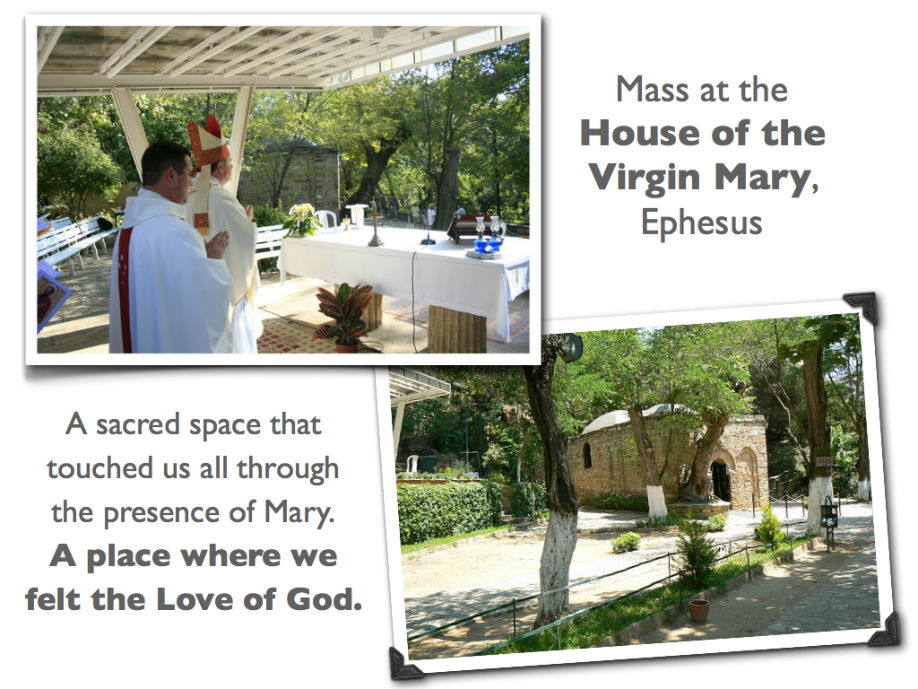

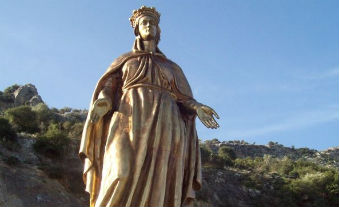
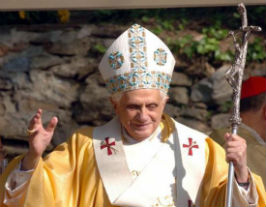
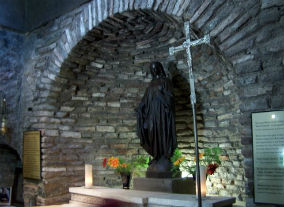
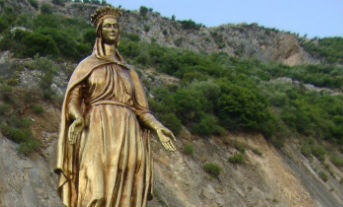
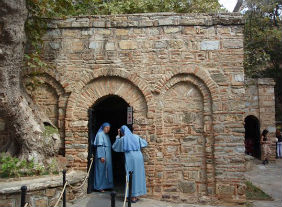
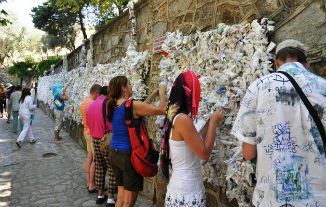
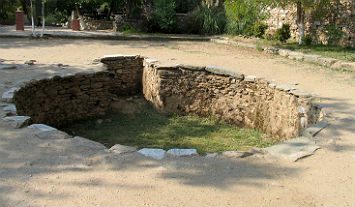




Very spiritual place. Can enter the house and light a candle. Very well kept area.
After Ephesus this small area is a bit of an anticlimax though for those with a religious sensibility it may be meaningful and important.
The place is beautifully located on a hill with green view
It is easy to get to when you are in Ephesus. Even if you are not Christians, it is worth a trip. It is tranquil, and relaxing area. There is not much other than the little house of Mary, coffee shops, and gift shops. I believe there are regular masses being held as well.
The feeling you get when you walk into this house is amazing. It may just be an empty stone building but the you can sense the history. It is like being on a pilgrimage. Won't ever forget it. Well worth the visit.
My husband and I visited the house where the historians believe Mary lived while in Ephesus. It is more of a shrine and worship place. The grounds are beautiful and the prayer wall is a sight to see. People write their prayers on tissue and slip them onto the wall in the cracks.
Lovely chapel on the foundation of the place that is believed to be Mary's last place of residence. Many people visit and it can get crowed but usually moves quickly. Head covering is required in the chapel.
House of Virgin Mary – the most sacred place! And the moment I began to write great cover great excitement that I will tell the House of the Holy Mother. Unique, beautiful, pure, miraculous place! I've been there three times, and three times – I do not know how it happened, but the crowd of tourists seemed to disappear.
It was a little scary riding the bus up the "hill" to get to the house, but if you don't mind the drop off the views are great. The house is located way up a hill, very isolated. A Catholic Mass was being celebrated right outside of the house while we were there.
Still an operating church. Small but powerful. Worth visiting or either religious or cultural reasons.